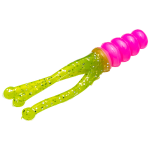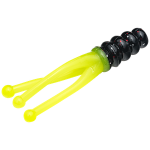News & Stories
Early summer shallow water bassin'!
Posted by admin on May 18, 2020
By Mike Frisch
Early summer is a great time of year to chase largemouth bass. Many fish are now recovered from the spawn and are feeding aggressively. And, many are still roaming shallow to mid-depth waters and can be caught throwing a swim jig, which just happens to be a favorite bassin’ presentation for many anglers, this one included!
Early summer finds bass roaming shallow to mid-depth flats, often those featuring cover like pencil reeds, other emerging weeds, and fallen timber. Also, shorelines with lots of man-made cover like docks and boatlifts are other potential hotspots.
When fishing reeds, I like to move along throwing a swim jig to the edges of the reed patches, or right through them if they are not too thick, and quickly retrieving it back. Often, as the bait caroms off a reed, an aggressive bass will come up and eat it, and then it’s game (or should I say fish) on! One tip for effective casting in reeds it to observe the way the wind has blown the reeds and to fish that direction. Fishing “with the reeds” is usually more productive and results in a lot less “reed hook-ups” than fishing across the reeds!
When targeting docks, boat lifts, and trees, I position the boat so that I can swim the jig along the sides of the dock, lift, or tree and then also make casts to the covers’ outer edges. It pays to make note of where the bites are coming from as oftentimes a pattern will emerge. For example, maybe most fish are holding close to shore along the shaded dock sides, and so making multiple casts to those areas results in the most bites.
My swim jig set up consists of a skirted style bass jig particularly designed for the technique and then tipped with some form of soft bait action tail.
I like ¼ or 3/8-ounce Hack Attack Heavy Cover Swim Jig which has a stout hook and weed guard that works great when fishing around reeds, docks, and trees. I often tip the jig with a Rage Swimmer. This bait has a soft-ribbed body and pancake-like tail that provides vibrations that work great for attracting bass and triggering bites.
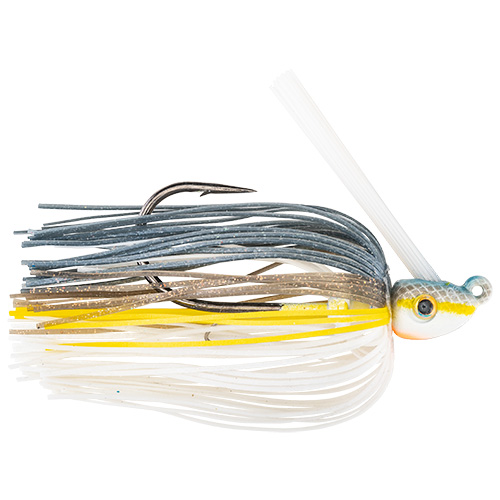
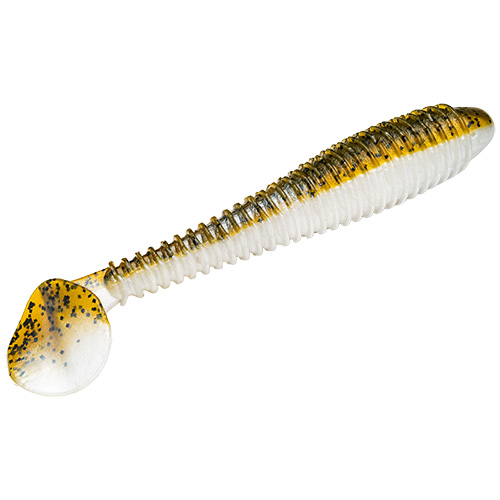
When the fish are very aggressive, or when fishing a bit deeper water, I will opt for the heavier jig, while the shallowest waters often call for the lighter offering.
In the clear waters that I usually fish, natural color patterns often shine. For example, a white or sexy shad jig works great when paired with a similar colored trailer. Also, because shallow water bluegills are prime forage for bass now, bluegill patterned jigs and trailers often produce fish. Experimenting with color patterns and letting the fish determine the “color of the day” is always sound advice.
This style fishing calls for baitcasting gear. I have had very good success recently fishing swim jigs on a 7-foot Lew’s Mach 2 baitcast combo. This combo features a sensitive rod with a Winn split-grip handle and has a reel that is smooth casting, lightweight, and durable.
Spooling the combo with fluorocarbon line completes my swim jig set up. Fluorocarbon is nearly invisible in clear water and has low stretch which allows for solid hooksets when bass hit at the end of long casts. P-Line Tactical fluorocarbon in 14-pound test is my choice because it allows for ultra-long casts and is abrasion resistant for fishing around cover too.
Hooking big bass at the end of long casts is one of my favorite early summer fishing tactics. Using the tips just provided can probably help you get in on some of this fast, early summer fishing action as well. As always, good luck on the water and remember to include a youngster in your next outdoors adventure!
Mike Frisch hosts the popular Fishing the Midwest TV series. Visit www.fishingthemidwest.com to learn more!
Photo – Swim jigs catch bass holding along pencil reeds!
Opening Day Walleye Success!
Posted by admin on April 30, 2020
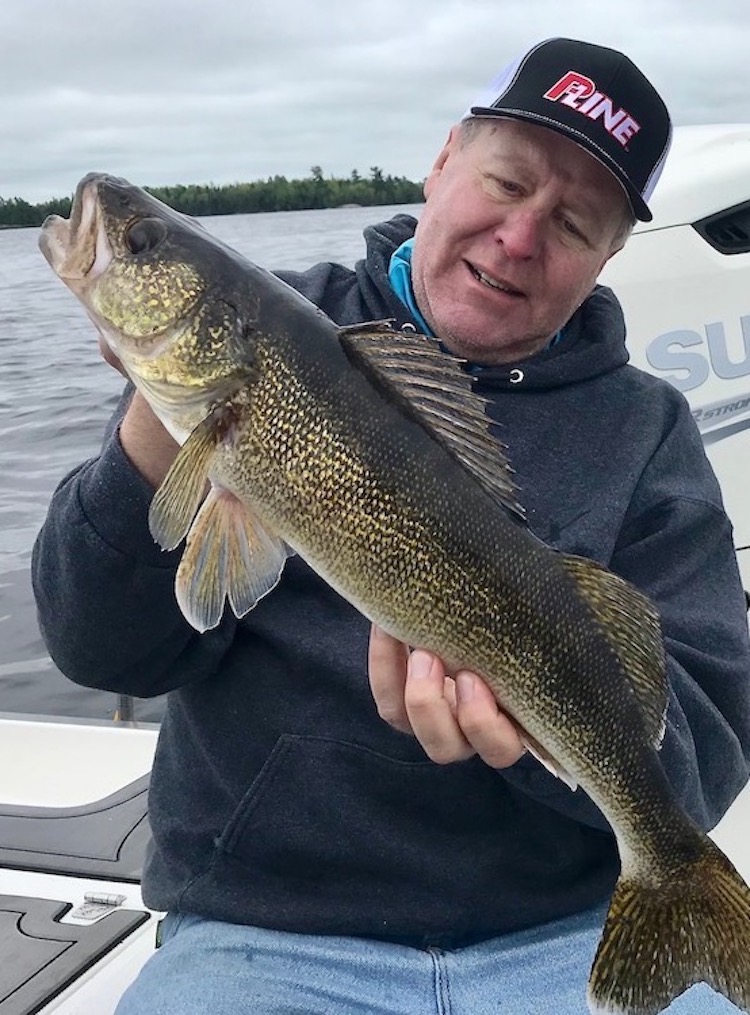
By Mike Frisch
If was a long winter and even longer spring as many have spent the past several weeks social distancing! Now, however, it’s fishing season and our governor has told us to get outside and go fishing, while still being safe. So, we best heed that advice!
A key to “walleye opener” success is choosing the right lake, with water temperature being a top consideration. For that reason, I like to start on a small, shallow lake that warms quickly. This year, however, a somewhat early ice out (at least in comparison to recent years) could mean that some bigger lakes have warmer-than-usual water and produce fish during early season too.
Finding lakes with warm water is a key, and so is considering a lake’s fishing history. I like to pick a lake for opener that traditionally produces good early season catches. And, lakes where the walleyes bit well last fall and again last winter deserve consideration too.
Regardless the lake selected, I start my early season search along the lake’s first drop-off where the shoreline flat dumps into deeper water. Specifically, I look for differences along that edge, maybe areas of emerging weeds, bottom composition changes, or small turns or points on the drop-off. These spots often congregate baitfish drawing walleyes as well.
Cruising through likely looking areas and watching my sonar unit helps me find weeds, bottom composition changes, and baitfish and walleyes too. My Solix sonar units feature a combination of MEGA Side & Down Imaging and CHIRP Sonar that, when used together, help me easily “see” the various structural elements as well as any baitfish and bigger fish relating to them. A quick cruise through a potential fishing area in search mode before actually wetting a line is a great way to eliminate unproductive water and quickly get on a bite!
Sometimes during this search, I locate fish up on the shallow flat adjacent to the drop-off, while at other times they relate to the drop-off. Regardless where they’re at, a great way to catch them is by pitching or slowly trolling/drifting fishing a classic jig and minnow combination. When they’re on the flat, I like to pitch the jig to avoid spooking those shallow fish. When deeper ‘eyes are found, the slow troll method is a great way to present the bait.
Jigs with spot-tail shiner minnows are the bait of choice on lakes with good populations of those minnows, while jigs and fatheads works just as well on lots of small, shallow lakes.
Regardless which minnow is used, I prefer a jig with a concave head that “stands up” and keeps the minnow with its tail up, particularly when pitching the shallows This style allows the bait to struggle near bottom on the pause, with the minnow still being visible to nearby fish.
The new Crater Head Jig is my jig-of-choice for this fishing. We had a chance to sample this “new to the market” jig when pitching to walleyes in the shallows late last fall and had excellent success. The jig will be available in several sizes and colors, with an 1/8-ounce head being my choice for shallow, early season walleyes. If the water fished is a bit off color, a bright color often is most productive. More subtle colors are often preferred in clearer waters.
Regardless whether you fish clear water or off-colored waters, attracting walleyes is the goal of opening day anglers. The tips just offered are designed to help anglers do just that! Good luck on the opener and remember to include a youngster in your next outdoors adventure.
Mike Frisch hosts the popular Fishing the Midwest TV series. Visit www.fishingthemidwest to see more fishing tips and view recent TV episodes as well!
Photo – Fishing the Midwest founder Bob Jensen with an early season walleye caught on a jig and minnow combination.
Spring crappies are biting right now!
Posted by admin on April 24, 2020
Crappie time!
By Mike Frisch
Lakes across the Midwest are ice free and warming and that means crappies are spending more and more time shallow. These scrappy panfish are in those shallows looking for food meaning they can provide some of the year’s fastest open-water fishing action!
Veteran early season crappie anglers know finding the warmest shallow water is usually key. Warmer waters usually attracts crappies as the first signs of open-water life often occur in the warmest of the shallows, drawing hungry fish. As mentioned previously, these crappies are there to feed first and later to spawn.
Shallow, dark-bottomed bays are classic early season spots as their waters warm quickly drawing hungry fish. Marinas and boat channels are other shallow spots that will warm quickly and draw panfish too.
A good way to find early season crappies involves staying on the move and searching various shallow spots. When fishing from a boat, I keep an eye on the temperature gauge on my sonar unit when going from spot-to-spot as, again, finding warm water is key. Shore anglers, though more limited in spots than the boat angler, often do well this time of the year too as shallow areas that hold fish are often accessible from shore now too.
Once located, a small panfish jig tipped with a crappie minnow or waxworm and fished below a small bobber usually works, particularly when the fish are finicky. When a bit more aggressive fish are encountered, it’s usually hard to beat a small jig and plastic combo. In fact, a Mr. Crappie Jig Head paired with a Mr. Crappie 2” Joker is an awesome combination when a school of hungry shallow crappies is located. The Electric Chicken and Tuxedo Black/Chartreuse color Joker are two of my favorites.
Whether fishing a jig and live bait or jig and plastic, fishing the combination a couple feet below a bobber and casting near shallow cover like weeds, brush, and timber usually results in bites if fish are present. Another key is to set the bobber so the bait is presented above the level the fish are holding, as crappies are notorious for “feeding up.”
Also, using a small bobber usually increases catch rates as well as a small float slides easily under water on the bite. This can be key for finicky fish that are often spooked by the floatation of more buoyant bobbers.
A final suggestion is to approach potential fishing spots quietly using your trolling motor and to avoid any unnecessary noises when fishing. Spring crappies in the shallows are notorious for being spooky and avoiding any noise and commotion that can easily scatter these wily fish will probably up your catch.
Spring is here and so is the urge to fish open water. For many anxious anglers, spring and crappies go hand in hand. These fish offer some of the first angling opportunities of the year and they are often cooperative now too. Following some of the tips just provided can, in fact, probably help you land some of these scrappy fish on your spring fishing trips this year!
As always, good luck on the water and remember to include a youngster in your next outdoor adventure!
Mike Frisch hosts the popular Fishing the Midwest TV series. Visit www.fishingthemidwest to see more fishing tips and view recent TV episodes as well!
This is my first blog post.

